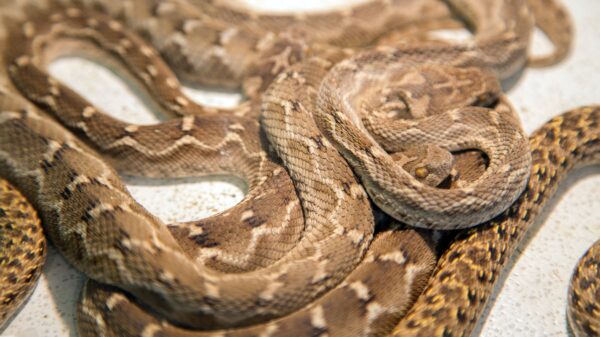
Are you curious about the elusive and mysterious weasel? These furry creatures have a secret life that most people never get to experience. From their impressive hunting skills to their unique social structures, there’s so much more to these little critters than meets the eye. In this blog post, we’ll explore the fascinating world of weasels and uncover some surprising facts about these sneaky mammals. Get ready to be amazed by the secret life of weasels!
Introduction to Weasels
Weasels are small carnivorous animals that belong to the mustelid family, which also includes badgers, otters, and wolverines. There are many different species of weasel, including the ermine, ferret, and stoat. Weasels are found in woodlands and fields across North America, Europe, Asia, and Africa.
They are known for their long, slender bodies and short legs. Their fur is typically brown or black with white markings on the face and belly. Weasels have sharp teeth and claws that they use to kill their prey. They are also known for their high level of activity and their quick movements.
Anatomy and Physical Characteristics
The weasel is a small, carnivorous mammal of the family Mustelidae, which also includes stoats, ferrets, badgers and otters. There are over 60 species of weasel. The most common type found in North America is the short-tailed weasel.They have long, slim bodies with short legs. Their tails are long and they have sharp claws and teeth. Weasels are very agile and able to climb trees and swim well. They are mostly active at night and prefer to live in areas with dense vegetation such as forests, woodlands and wetlands.
They eat small mammals such as rabbits, mice and voles. They kill their prey by biting it on the back of the neck. They will also eat birds, reptiles, amphibians, fish and insects.

Habitats & Distribution
The weasel is a small, carnivorous mammal of the family Mustelidae, which also includes badgers, otters, ferrets and wolverines. There are many different species of weasel, found all over the world. In North America, the most common species are the short-tailed weasel (Mustela erminea) and the long-tailed weasel (Mustela frenata). Weasels have long, slim bodies and short legs. Their fur is generally brown or black above and white below.
Weasels are very active animals, spending most of their time searching for food. They are mainly solitary creatures, although males and females will sometimes share a winter den. Weasels typically live in burrows underground or among rocks, but they will also use abandoned nests of other animals.
The diet of a weasel depends on the particular species and its location. Smaller weasels feed mainly on insects and rodents, while larger ones may also eat rabbits and birds. Weasels will kill more prey than they can eat immediately and store the surplus in their dens for later consumption.
Most weasel species have a wide range of habitats, including forests, woodlands, marshes and grasslands. Some arctic weasel species are found in tundra regions.
Feeding Habits & Prey Selection
Weasels have a voracious appetite and will eat just about anything they can catch. Small mammals, such as mice, voles, and rabbits, make up the bulk of their diet but weasels will also take birds, reptiles, insects, and even carrion. When hunting for prey, weasels will enter burrows and other tight spaces after their prey. They are also known to follow the tracks left by prey animals in the snow.
When selecting prey, weasels appear to be opportunistic hunters that go for whatever is easiest to catch. Studies have shown that weasels living in areas with a high density of small mammals will primarily hunt those animals while those living in areas with fewer small mammals will supplement their diet with other items such as birds and reptiles.
Behavior & Social Structure
Weasels are often thought of as being pests, but there is more to these creatures than meets the eye. In fact, weasels have a complex social structure and interesting behaviors that are worth learning about.
When it comes to social structure, weasels live in family groups consisting of a mother and her offspring. The young weasels will stay with their mother until they are ready to start their own families. These family groups typically live in underground burrows or dens.
Weasels are very active creatures and are constantly on the move in search of food. Their diet consists mostly of small mammals such as mice and voles. Weasels will kill more prey than they can eat and will store the extra food in their dens for later consumption.
Interaction with Humans
Weasels are generally considered to be pests, and as such, humans often try to kill them on sight. However, there are some people who appreciate weasels and have even been known to keep them as pets. Weasels can be tamed relatively easily, and they can make fun and playful companions. However, they can also be quite nippy, so it’s important to handle them with care.
Conservation Status
The weasel is a small, carnivorous mammal of the family Mustelidae, which also includes otters, badgers, ferrets and wolverines. There are many different species of weasel including the stoat, ermine and ferret. They are found on every continent except for Antarctica.
Weasels have long, slim bodies and short legs. They are very agile and can climb trees and swim well. Their fur is thick and soft with a coat that changes color with the seasons. In the winter, their fur is white which helps them blend in with the snow.
They are solitary animals except during the breeding season. They are carnivores and will eat mice, voles, rabbits, birds and their eggs. They will kill more prey than they can eat and store the extra food in their dens.
The conservation status of weasels varies depending on the species. Some species are doing well while others are declining in numbers due to habitat loss and hunting pressure.
Conclusion
Weasels are amazing creatures, and this article has hopefully given you a little insight into their fascinating secret lives. From their cunning hunting abilities to the way they use their coats for camouflage, weasels are truly remarkable animals. If you ever get the chance to observe them in the wild, be sure to take it – you’ll be amazed at what these tiny creatures can do!







